Siren
Government, Communities, Scientists: Planning to protect endangered species 3x faster
Siren
Government, Communities, Scientists: Planning to protect endangered species 3x faster
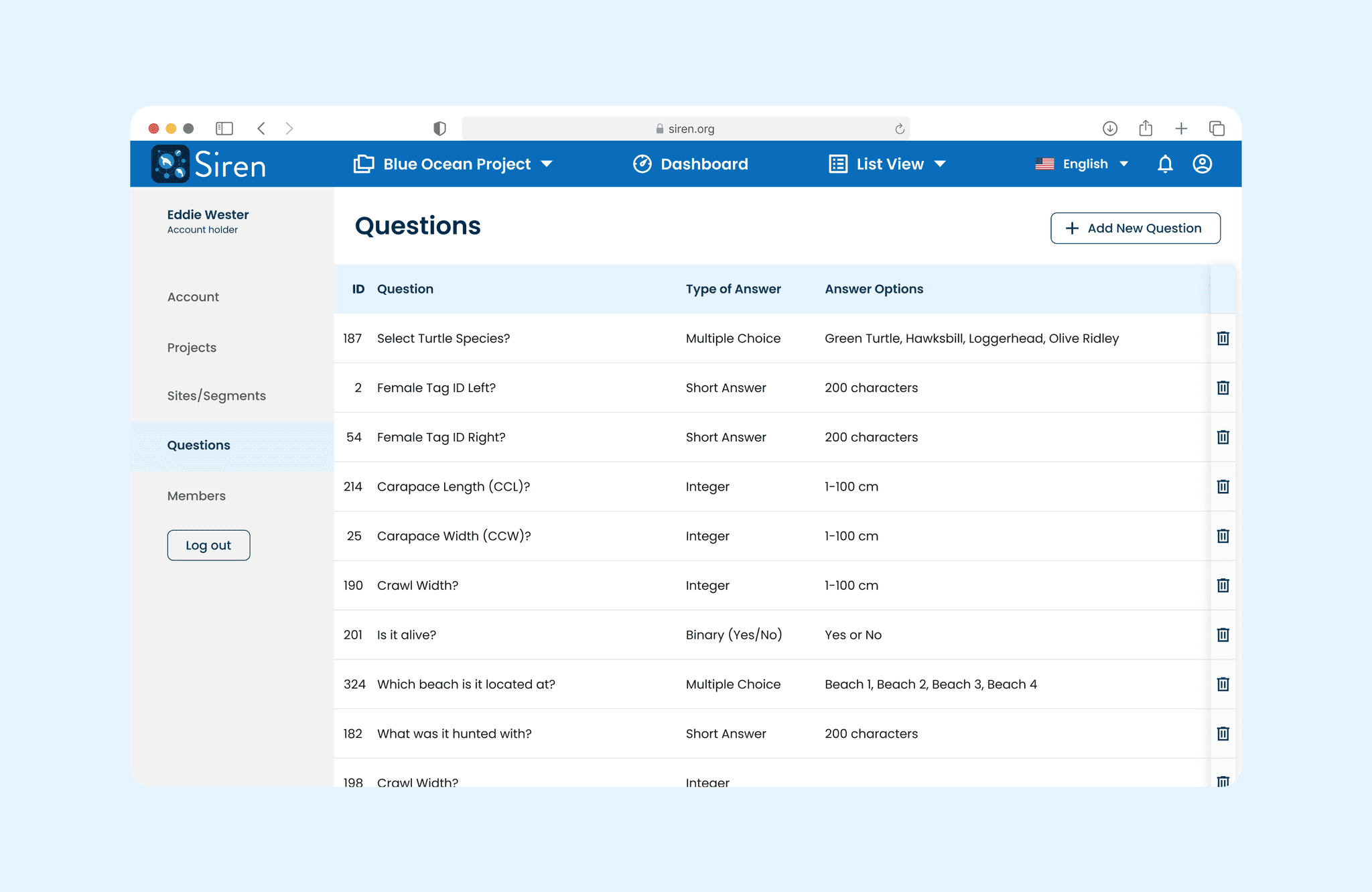

Background
Siren, subsidiary of African Marine Mammal Conservation Organization, is a software that allows fisherman to upload and document marine life. Scientists and researchers analyze these observations and are then able to collaborate with governments and organizations to formulate a plan to protect endangered species.
Context
Context
The Team
2x UX Designers
2x Front-end developers
2x Engineers
1x Field assistant
1x PM
Why an Improvement?
Fishermen would upload observations (photographs only), leaving researchers unclear on information needed in order to formulate an accurate plan of action (i.e. Where did you find the species? Is it alive or deceased? What is the length of the species? etc.)
Prior to this feature development, communication was done via emails; a prolonged and lengthy process.
The Team
2x UX Designers
2x Front-end developers
2x Engineers
1x Field assistant
1x PM
Why an Improvement?
Fishermen would upload observations (photographs only), leaving researchers unclear on information needed in order to formulate an accurate plan of action (i.e. Where did you find the species? Is it alive or deceased? What is the length of the species? etc.)
Prior to this feature development, communication was done via emails; a prolonged and lengthy process.
The Team
2x UX Designers
2x Front-end developers
2x Engineers
1x Field assistant
1x PM
Why an Improvement?
Fishermen would upload observations (photographs only), leaving researchers unclear on information needed in order to formulate an accurate plan of action (i.e. Where did you find the species? Is it alive or deceased? What is the length of the species? etc.)
Prior to this feature development, communication was done via emails; a prolonged and lengthy process.
Defining
Defining
How might we design for researchers to efficiently get the information they need in order to quicken the process to plan and protect endangered species?
How might we design for researchers to efficiently get the information they need in order to quicken the process to plan and protect endangered species?
Impact
Impact
With the launch of this feature, collaboration across governments, coastal communities, and scientists for conservation efforts of endangered species are moving much quicker and have significantly improved.
Siren is used across ~30 countries and is sponsored by National Geographic for three years in a row.
With the launch of this feature, collaboration across governments, coastal communities, and scientists for conservation efforts of endangered species are moving much quicker and have significantly improved.
Siren is used across ~30 countries and is sponsored by National Geographic for three years in a row.
Takeaways
Takeaways
Creating clarity
Quick search & flexibility
Condense and centralize
Creating clarity
Quick search & flexibility
Condense and centralize
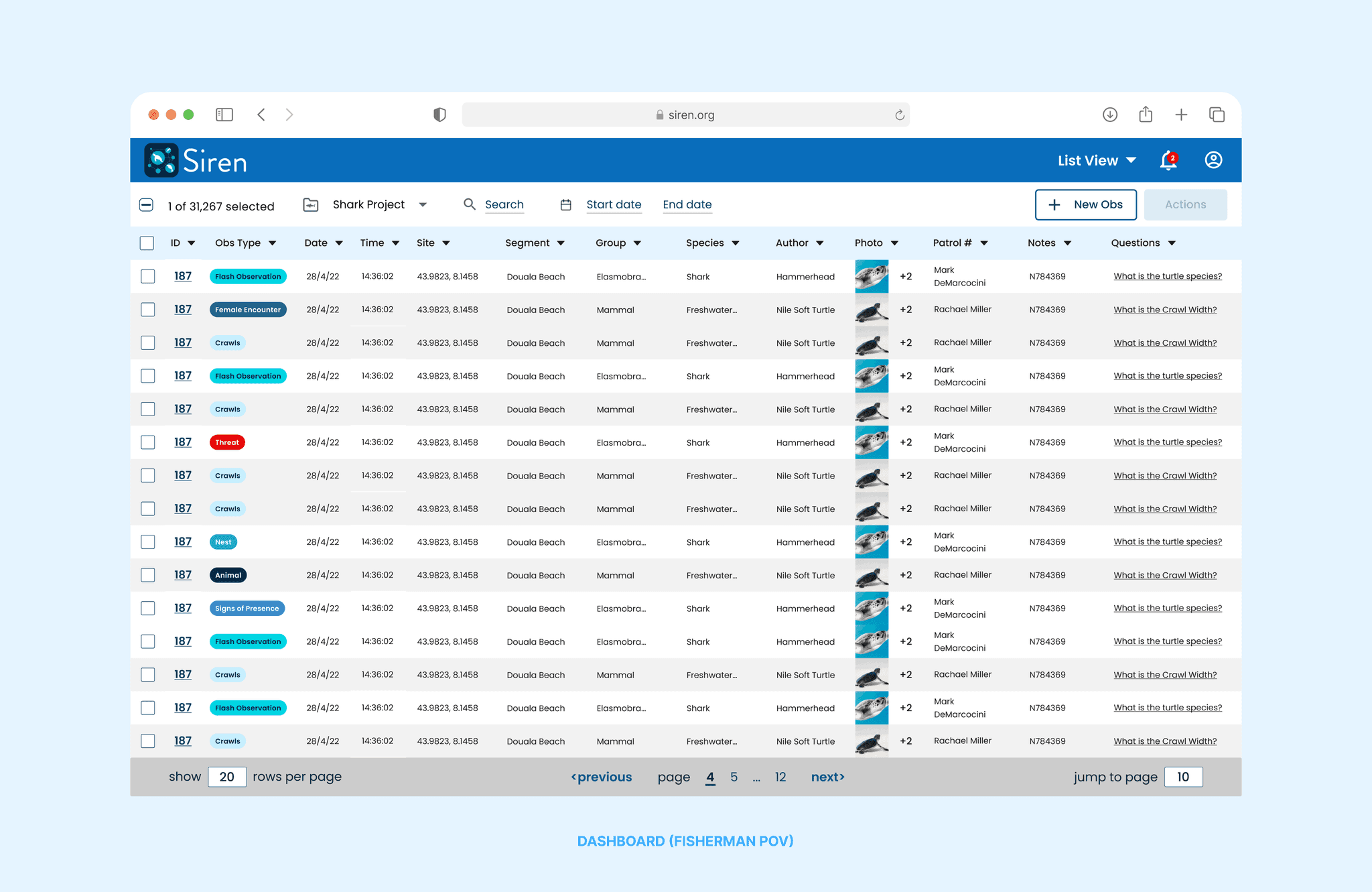

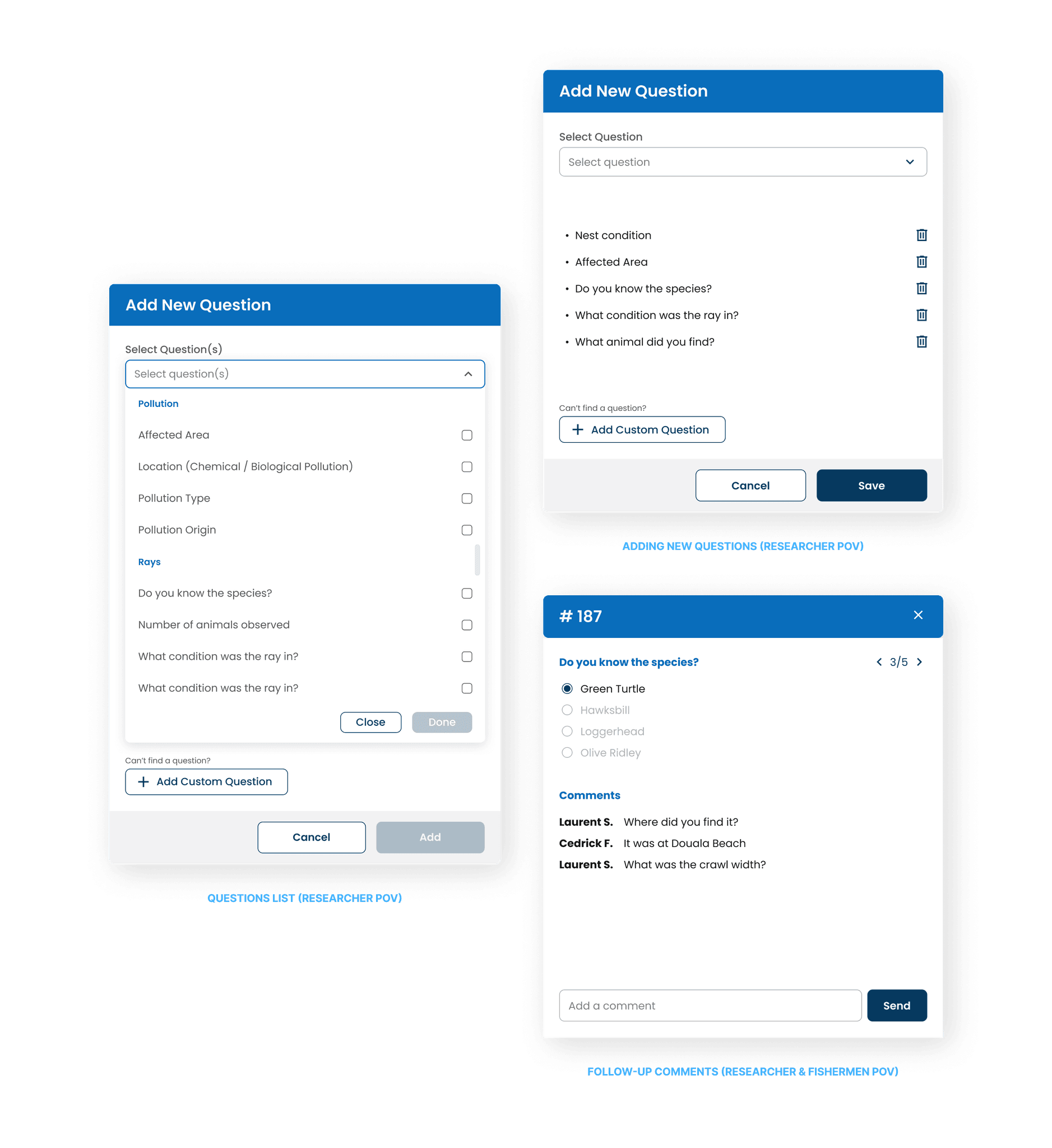

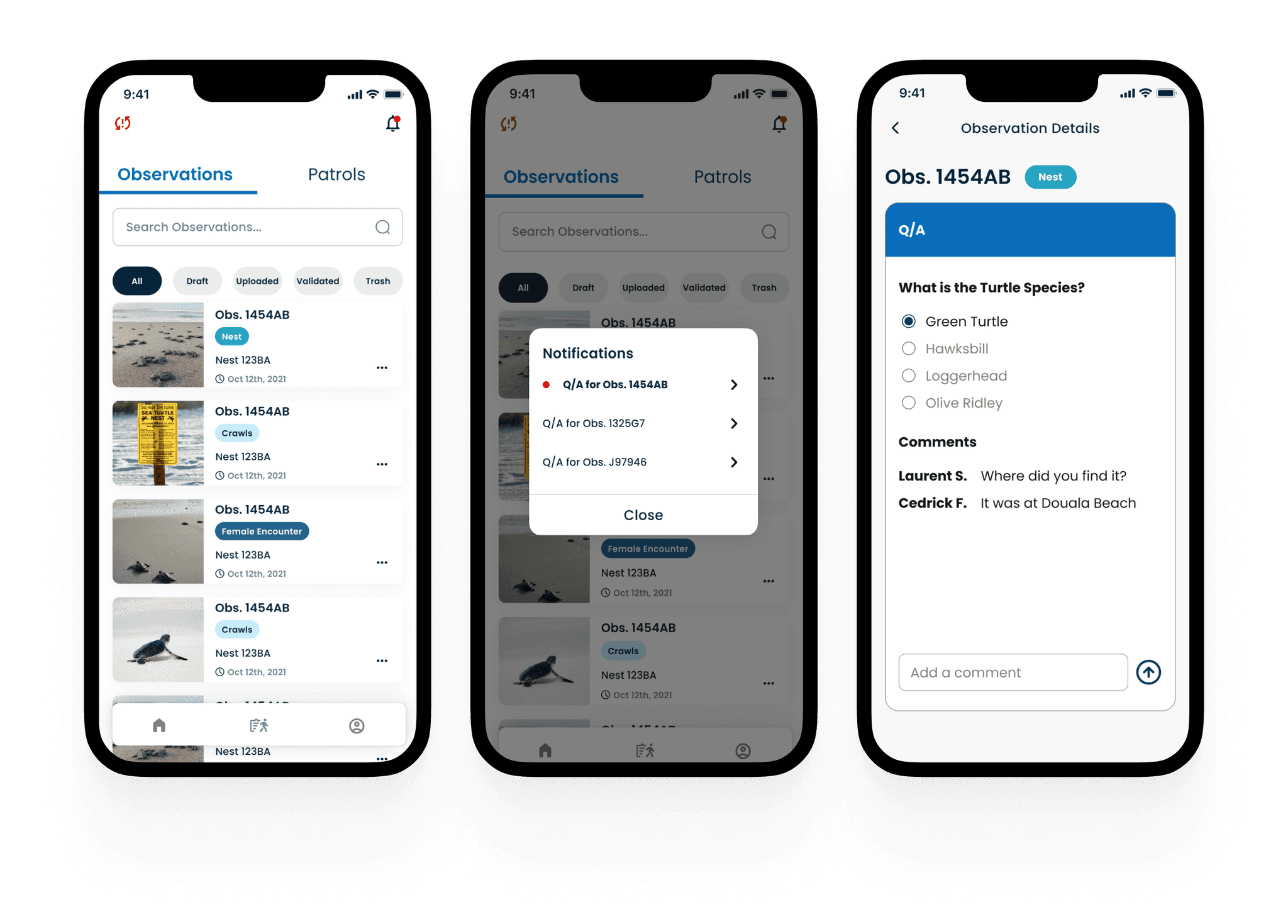

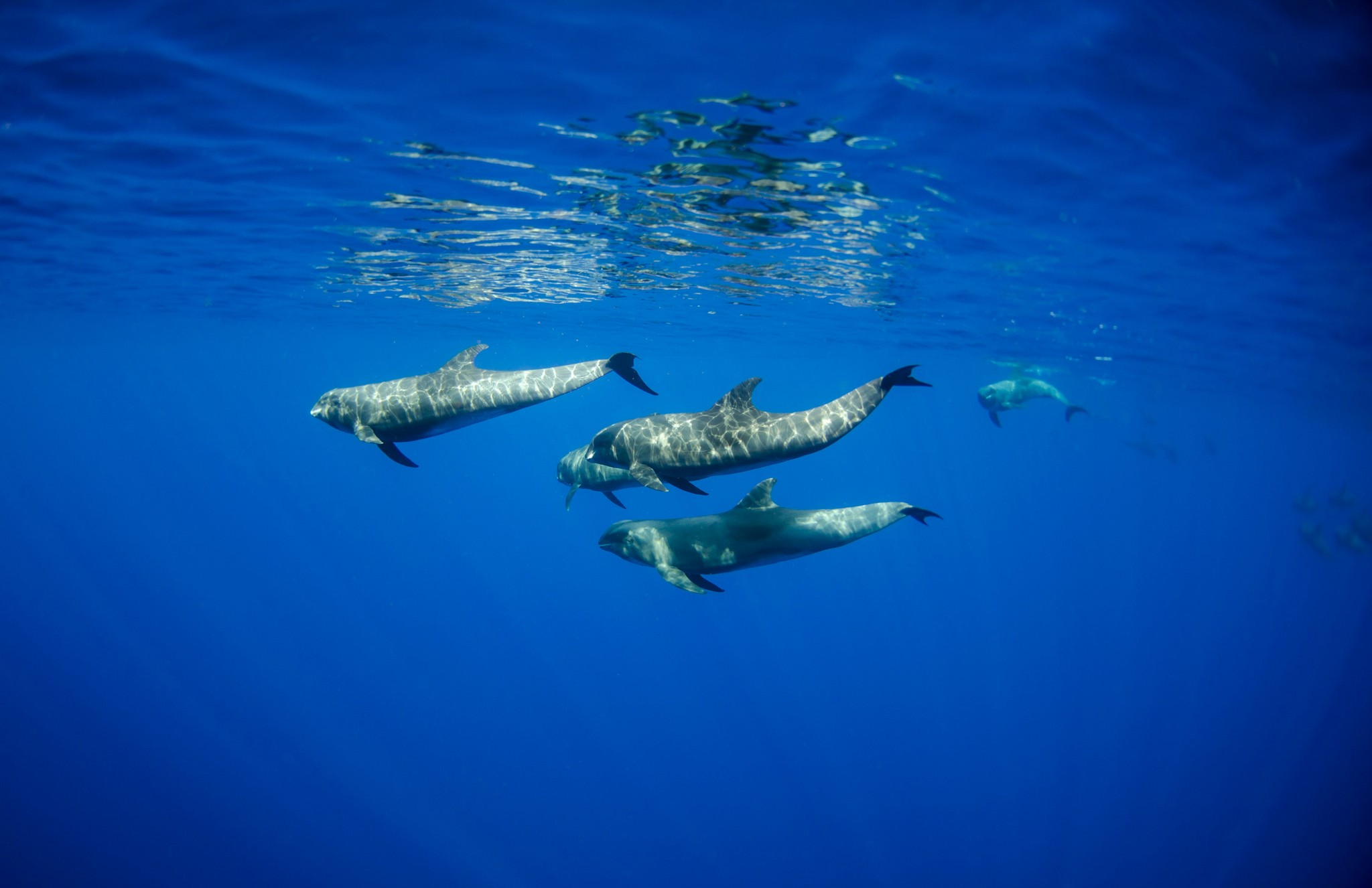

1. Creating clarity
1. Creating clarity
Previously, it wasn't clear to the researcher which project the questions were related to. This left fisherman/field assistants confused on which questions were pertained to them and the project they were on.
In the redesign, I emphasized project clarity, reduced the number of columns shown, and displayed the ID number column to show contextual relevancy.
The result: Clear project association, simplified interface, and contextual awareness - overall improved usability and clarity.
Previously, it wasn't clear to the researcher which project the questions were related to. This left fisherman/field assistants confused on which questions were pertained to them and the project they were on.
In the redesign, I emphasized project clarity, reduced the number of columns shown, and displayed the ID number column to show contextual relevancy.
The result: Clear project association, simplified interface, and contextual awareness - overall improved usability and clarity.
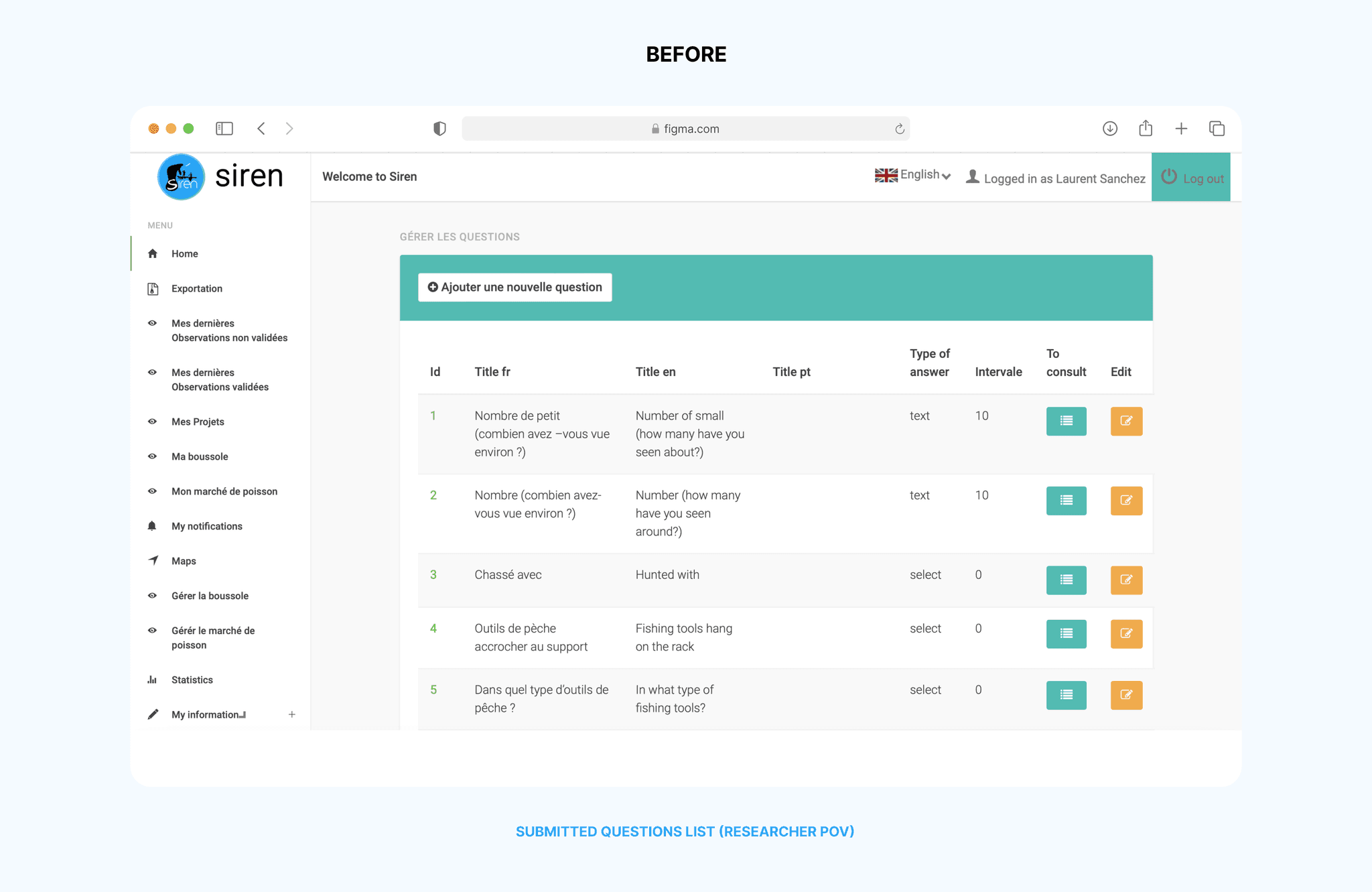

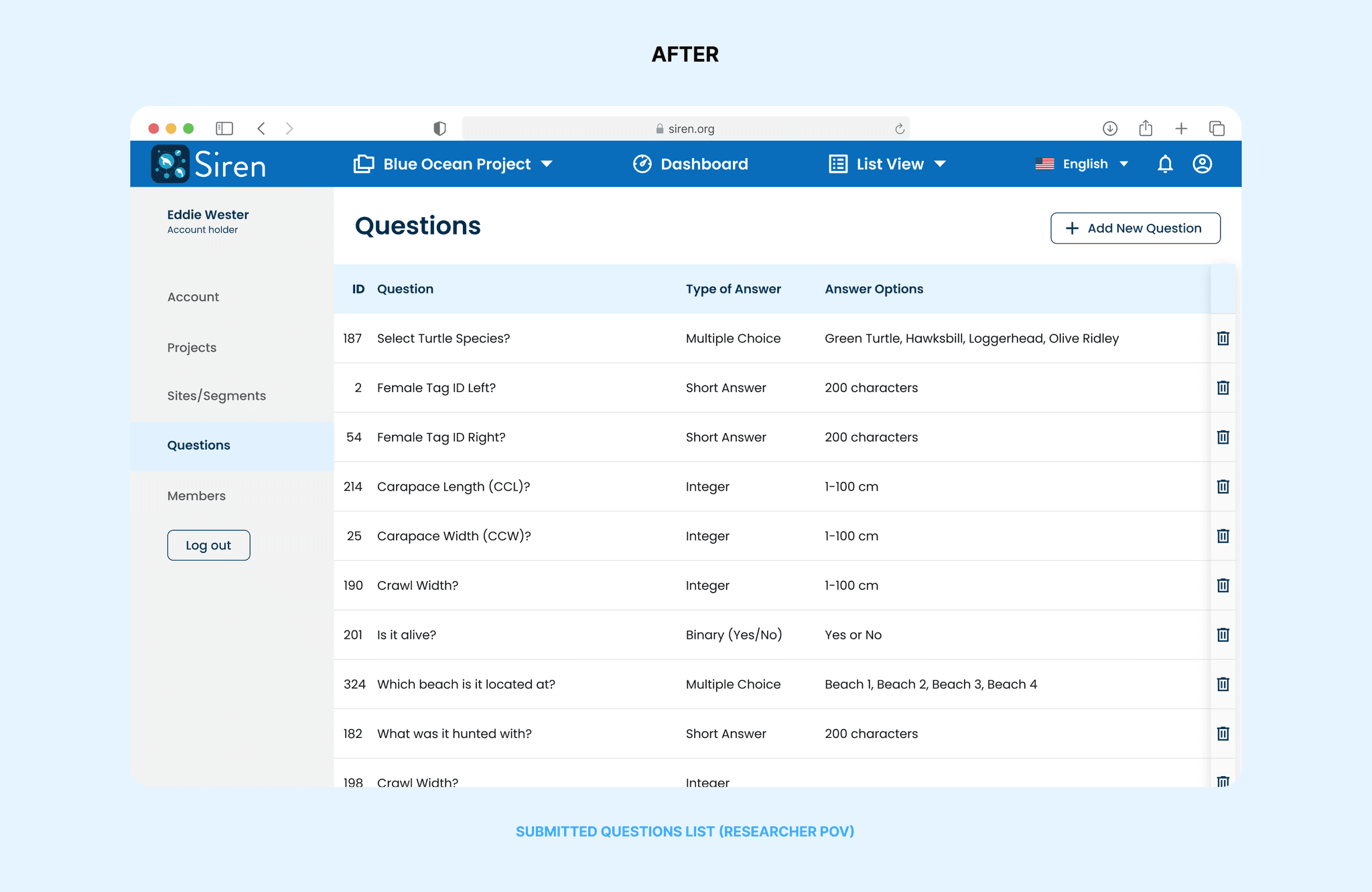

Quick search and flexibility
Quick search and flexibility
I redesigned the question configuration flow for researchers by organizing common questions under clear, filterable categories.
Additionally, researchers can now submit custom questions if their needs aren’t met by the pre-selected list.
The result: Improved efficiency, allowing researchers to submit questions faster and move more quickly toward planning their next steps.


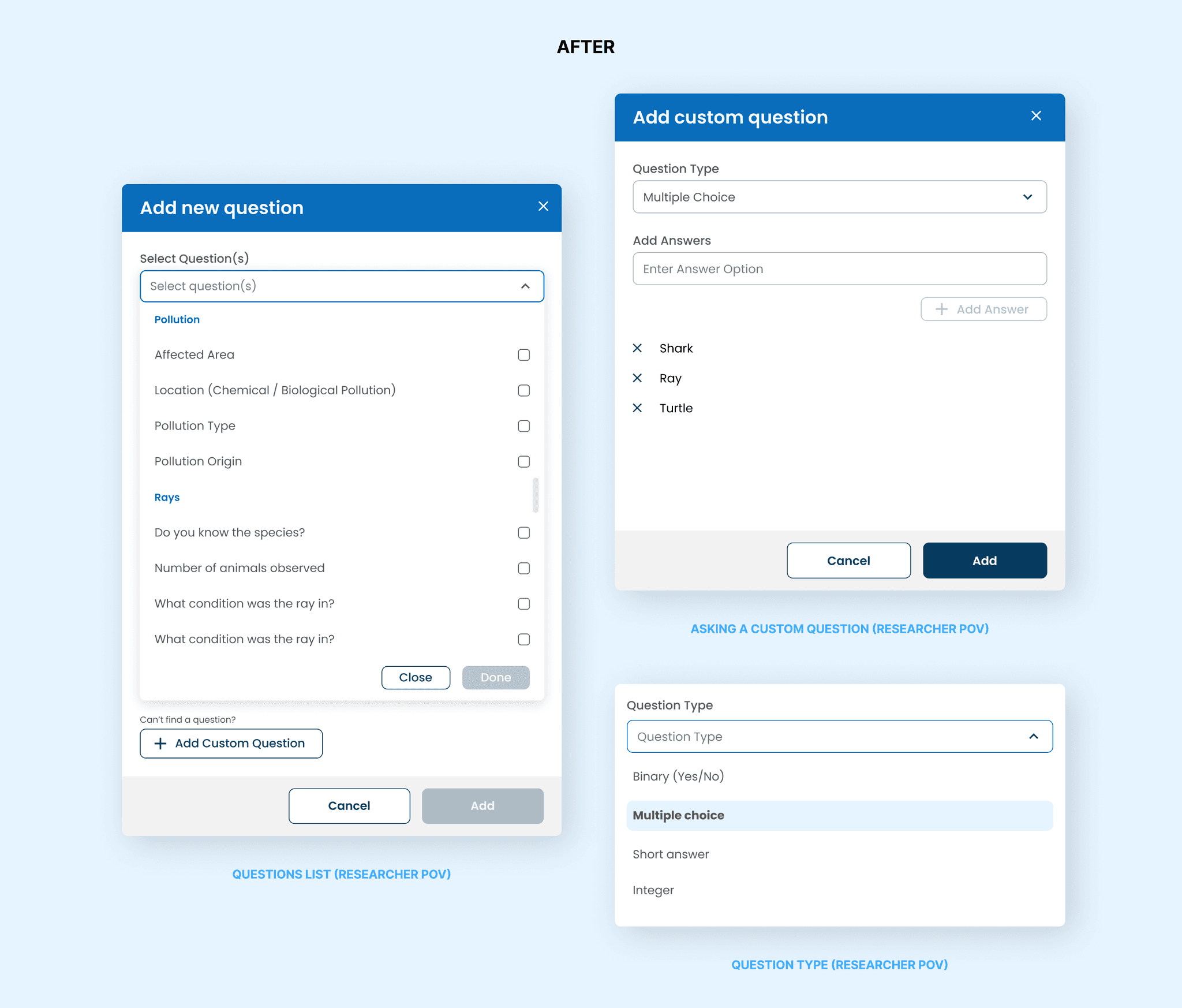

3. Condense and centralize
3. Condense and centralize
The previous flow didn’t allow researchers to submit follow-up questions or comments, which stalled communication and hindered progress.
Each question also had to be submitted individually, cluttering dashboards for both researchers and field assistants.
My new design allows multiple questions to be grouped under a single issue, with support for follow-up submissions—keeping all related communication centralized.
The result: Enhances clarity and organization while enabling global collaboration, allowing teams to stay informed and aligned through a single shared view.
The previous flow didn’t allow researchers to submit follow-up questions or comments, which stalled communication and hindered progress.
Each question also had to be submitted individually, cluttering dashboards for both researchers and field assistants.
My new design allows multiple questions to be grouped under a single issue, with support for follow-up submissions—keeping all related communication centralized.
The result: Enhances clarity and organization while enabling global collaboration, allowing teams to stay informed and aligned through a single shared view.
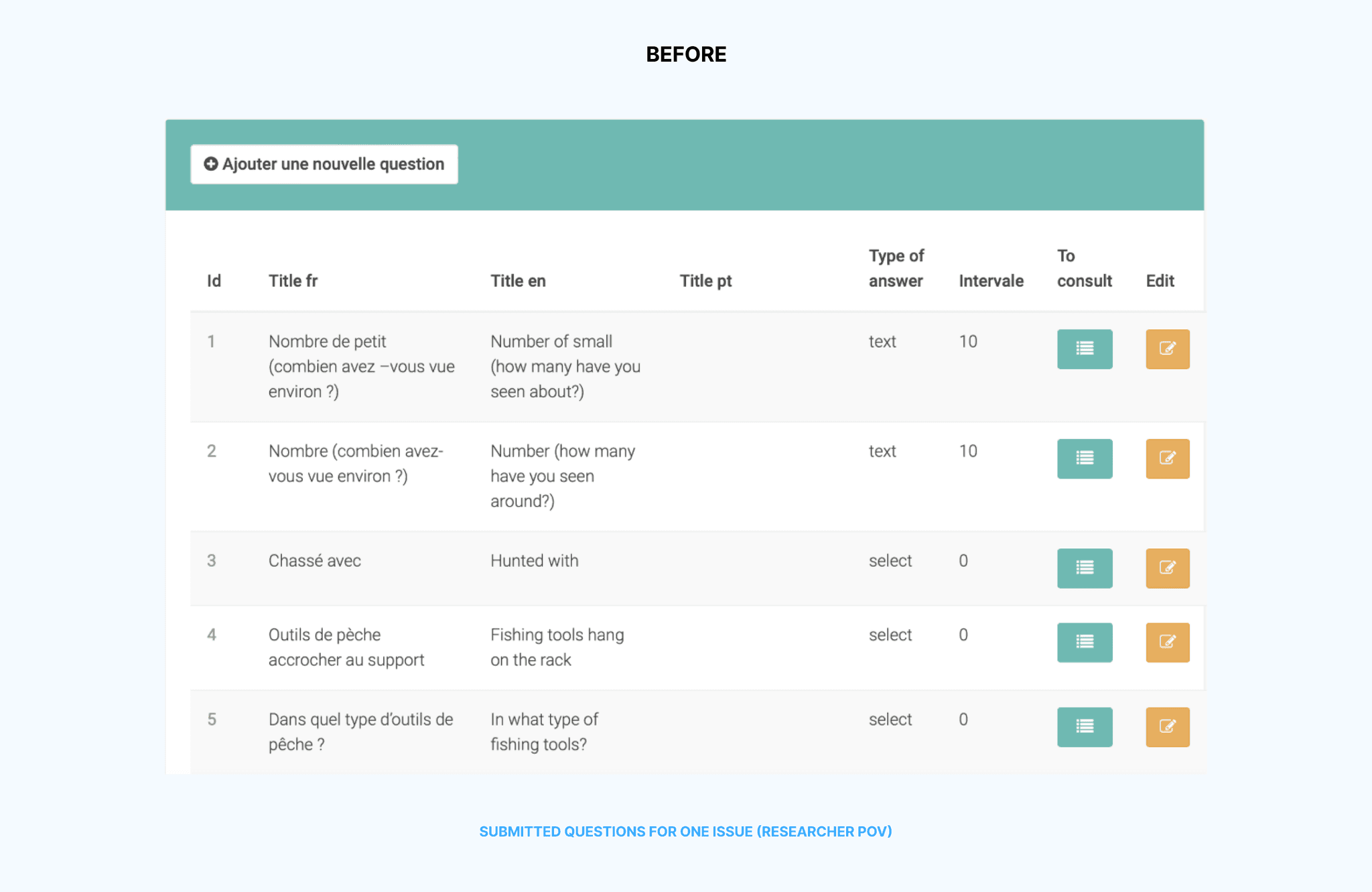

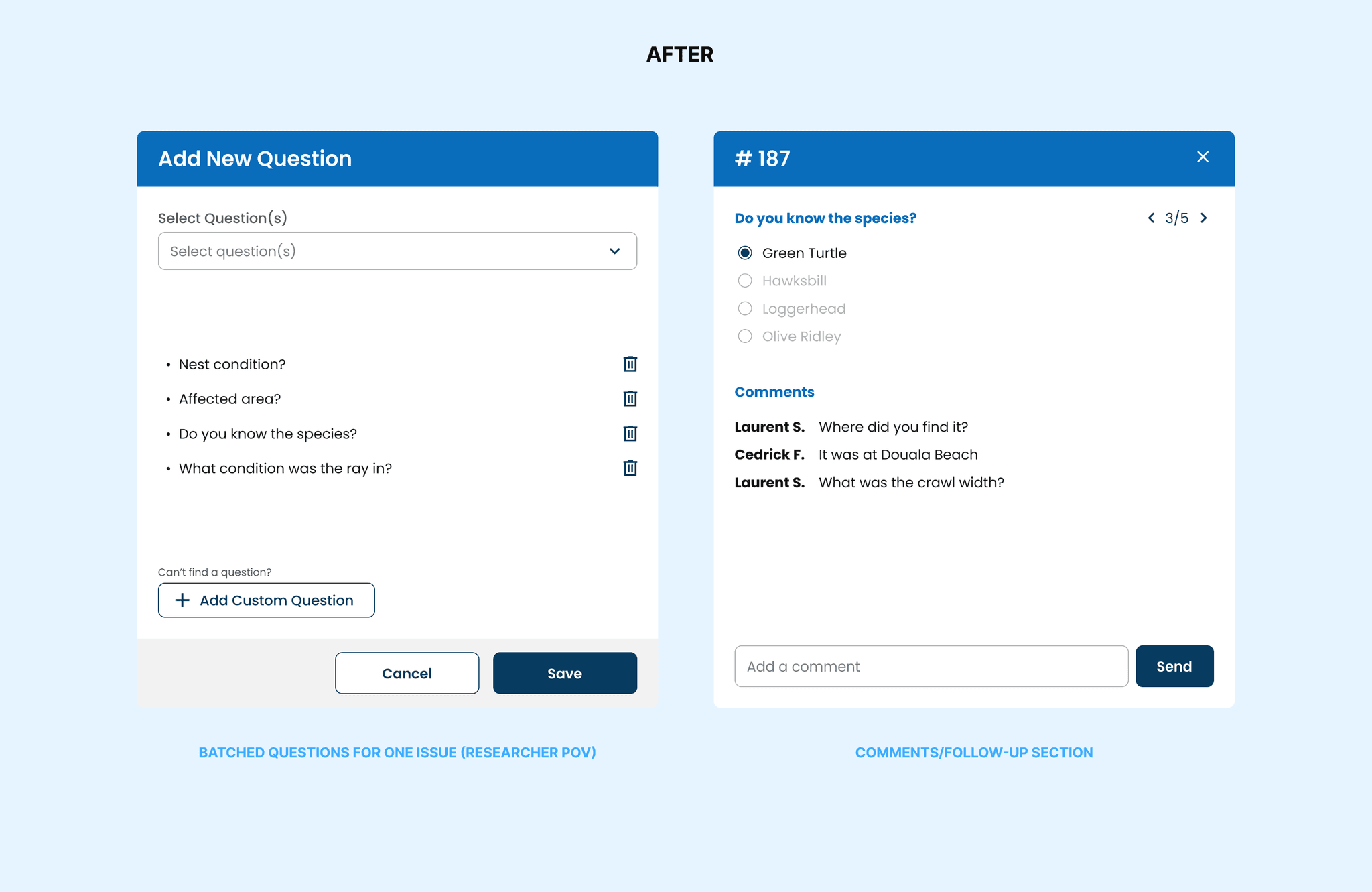

↳ POV: Researcher flow
↳ POV: Researcher flow


↳ POV: Fisherman/field assistant flow
↳ POV: Fisherman/field assistant flow


Impact
Impact
With the launch of this feature, collaboration across governments, coastal communities, and scientists for conservation efforts of endangered species are moving much quicker and have significantly improved.
Siren is used across ~30 countries and is sponsored by National Geographic for three years in a row.
With the launch of this feature, collaboration across governments, coastal communities, and scientists for conservation efforts of endangered species are moving much quicker and have significantly improved.
Siren is used across ~30 countries and is sponsored by National Geographic for three years in a row.
What I'd do differently?
What I'd do differently?
What I'd do differently?
Restructure where researchers/admins go to submit a question
Add most common asked questions to the top of list
Heavy emphasis on mobile view for field assistants/fisherman
Restructure where researchers/admins go to submit a question
Add most common asked questions to the top of list
Heavy emphasis on mobile view for field assistants/fisherman
© 2025 Candace S Wu
© 2025 Candace S Wu
© 2025 Candace S Wu